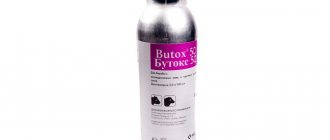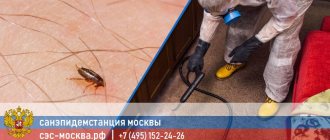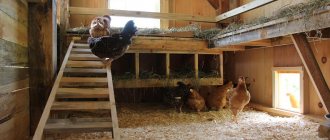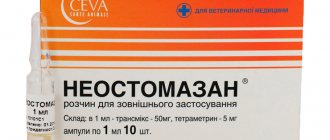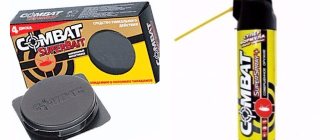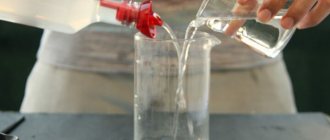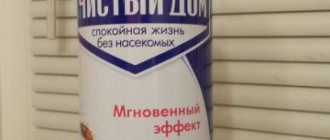2 217
2 comments
5
Author:
Sadchikov Nikolai Alekseevich.
Reading time: 2 minutes
Type of medicine: insecticidal-acaricidal 5% solution.
Release form: 5% concentrate - a white oily liquid that creates an emulsion with water, without dissolving in it, with a faint specific odor.
Purpose: treatment of ectoparasites of living birds and places where they are kept.
Analogues of the drug: delcid, incur, operin.
Cost of the drug: ampoules of 1 ml - from 25 to 100 rubles / piece. Price for 1 liter - from 3500 to 6000 rubles.
Active substance: synthetic pyrethroid deltamethrin (deltamethrin).
An insecticidal-acaricidal 5% solution of the drug Butox 50 is used to destroy scabies, ixodid and chicken mites, lice, fleas, lice, bedbugs, flies, midges and other ectoparasites . Active against adults and larvae, but does not affect insect eggs.
Fights against pests that are immune to preparations containing phosphorus and organochlorine compounds. Toxic to fish and bees.
Once in the body of parasitic insects, the pyrethroid deltamethrin accumulates on the periphery of their nervous system, suppresses nerve impulses, depriving the insects of mobility and causing paralysis and death.
If it comes into contact with the skin of warm-blooded animals and humans, it can be toxic in concentrated form . When diluted, it has virtually no irritating and/or allergic effect.
Compound
The active principle of Butox is deltamethrin, which is a synthetic pyrethroid. Dalmatian chamomile (pyrethrum) is known to repel insects, and the powder made from the flowers has long been used against bedbugs. Deltamethrin is a waxy substance that is insoluble in water. Therefore, an auxiliary component of the drug is an organic eluent. The insecticide is sometimes called Butox 50 because it is a 5% deltamethrin solution. It is an oily liquid with the smell of kerosene, capable of forming a stable emulsion with milky water.
Active ingredient and principle of action
Deltamethrin is used as the main active ingredient of Butox. This is a highly effective insecticide from the pyrethroid group used in agriculture. Like most isomers of this group, the action of deltamethrin is based on the activity of chrysanthemum acid, the free radicals in the formula are bromine atoms. In its technical form, deltamethrin is insoluble in water, so in the household it is used in ready-made form in Butox ampoules of 1 ml, the contents of which are diluted in 3-4 liters of water and used for treating premises and animals.
Method of penetration and absorption - contact and intestinal pesticide. Butox is used only for external use; recommended doses do not cause allergies. The substance is widely used in the agricultural sector, in households and in medicine to combat a number of parasites, harmful and synanthropic insect species. The deltamethrin formula contains only 1 isomer, which has a strong insecticidal effect. To create the drug, the one that has the most powerful insecticidal effect of the 8 existing isomers was chosen.
All pyrethroids have a destructive effect on the insect’s nervous system, disrupting calcium metabolism in synapses, and act on potassium-sodium channels, disrupting acetylcholine metabolism. As a result of strong stimulation of the nervous system, exoparasites die, and the protective effect of the active substance lasts about 15 days.
Analogue preparations of deltamethrin contained in Butox include butoflin, splender, decamethrin and others. The preparations are used for spraying agricultural crops and controlling pests. For warm-blooded representatives of the animal world, including humans, deltamethrin and Butox are moderately toxic substances. It is not used near apiaries; residues are not poured into open ground near water bodies due to the high toxicity of the isomers to fish.
Pharmacology
Pyrethroids are able to interact with lipids of the skin, as well as plant leaves. The water and organic solvent evaporate and the waxy substance adheres to the fats. For warm-blooded creatures, pyrethroids are low-toxic because they are almost not absorbed, remaining on the surface of the skin. The second defense mechanism is the rapid destruction of the active substance to harmless compounds. Cold-blooded animals do not have defensive devices, so the pyrethroid, when it gets onto the surface of the body or into the intestines of the insect, deactivates acetylcholine. The functioning of the nervous system is disrupted, paralysis occurs, and the arthropod dies. When working with Butox 50 and other drugs containing pyrethroids, caution is required. Drops that fall on a flower plant will kill the bees, and if the drug spills on the soil and is then washed away by rain into the river, the fish will die.
Efficiency
The domestic drug is much more effective than the imported one. A foreign product works great outside our country or in the first year of its appearance on the Russian market. Subsequently, this drug begins to be diluted, which reduces its beneficial properties. For example, spraying dogs
Butox has long been the most effective means of combating external parasites in Russia. The cost of the drug in large containers (especially for farmers) is much cheaper than in ampoules. The only negative is that the protection against ectoparasites is short-lived. It is necessary to repeat the treatment after 10 days due to the development characteristics of insects.
Purpose
According to the instructions, Butox is used to destroy crawling and flying arthropods on animals, walks, pastures, and in premises including housing. The drug has a protective effect. You should not bathe the animal three days before and the same time after treatment.
Butox 50, like other pesticides, does not affect arthropod eggs, so you need to wait three days until the larvae hatch. In order for them to become poisoned, it is important not to dilute the pesticide. It is believed that the toxicity of pyrethroids for warm-blooded animals is 2000 times less than for cold-blooded animals. But this is in case of contact with skin. Therefore, when working with Butox and analogues, it is necessary to protect your eyes, nostrils, and mouth.
Butox 50 for chickens - a veterinary drug for the destruction of ectoparasites of birds and the treatment of chicken coops
Active substance: synthetic pyrethroid deltamethrin (deltamethrin).
An insecticidal-acaricidal 5% solution of the drug Butox 50 is used to destroy scabies, ixodid and chicken mites, lice, fleas, lice, bedbugs, flies, midges and other ectoparasites . Active against adults and larvae, but does not affect insect eggs.
Fights against pests that are immune to preparations containing phosphorus and organochlorine compounds. Toxic to fish and bees.
Once in the body of parasitic insects, the pyrethroid deltamethrin accumulates on the periphery of their nervous system, suppresses nerve impulses, depriving the insects of mobility and causing paralysis and death.
If it comes into contact with the skin of warm-blooded animals and humans, it can be toxic in concentrated form . When diluted, it has virtually no irritating and/or allergic effect.
Application
An aqueous emulsion of Butox 50 is prepared on the day of use according to the instructions for carrying out the following insecticidal measures:
- Bathing.
- Spraying.
- Wetting.
- Treatment of premises.
- Processing of paddocks.
Sheep bathing
They practice bathing sheep. Before mass events, the drug is tested on a small group of animals. Lambs of different ages and different fatness are selected and observed for 2–3 days.
Swimming is carried out in warm, but not hot weather. To do this, use a specially prepared cupping pit located on a hill far from bodies of water. The need for Butox is calculated based on the volume of water and the required 0.05% concentration. To ensure access of the medication to the skin, treatment is carried out after cutting the hair.
Cupping pit
Animals do not need to be fed before bathing, but they should be given water. To ensure uniform distribution of the active substance, the solution is mechanically stirred for 20 minutes. Then 20 sheep are driven through the bath, removing a tenth of the working solution. Its amount is restored by adding 1.5 liters of Butox per 1 m3 of water. To allow the insecticide to drain off, the sheep are kept in a specially prepared pen. The waste liquid, as well as dirt from the pit, and water after washing it are transferred to settling wells. Make sure that the working solution does not get into the reservoir. At the discretion of the veterinarian, sheep bathing can be repeated within 10 days.
Chickens bathing
If chickens lose feathers, they are examined for lice eaters. If parasites are found, the easiest way to get rid of them on the bird is by bathing. The treatment is carried out in warm, but not hot weather. Add 0.9–1 liter of Butox to 1 m3 of water. Chickens are thrown into a container with a working solution in small groups of 10–20 individuals. If there are few birds, a bucket or basin will do. The chickens must dry out.
Chicken being bathed
Spraying
Before treatment, ensure uniform mixing of Butox with water inside the sprayer. If an animal is diagnosed with scabies, then it is necessary to use a 0.1% emulsion. For a large animal, reserve 3 liters of working solution. The treatment is carried out in the absence of strong wind. It is necessary to avoid contact of the emulsion with the eyes of animals and humans.
Spraying livestock
It is recommended to carry out processing in the following sequence:
- The inner, then the outer surface of the ears.
- Head.
- Torso.
- Anal area and tail.
- Legs.
Inflamed areas are treated with special care. This applies, first of all, to the treatment of sarcoptic mange in pigs. In order to destroy the larvae that have hatched from the eggs and prevent them from becoming sexually mature, it is necessary to repeat the treatment within 7–14 days.
Scabies
When keeping animals on pastures with an abundance of midges, treatments are carried out weekly. The drug is not washed off to maintain its protective effect. The instructions recommend different dosages to kill ticks, lice, and flying insects. Typically, the animal is attacked by all types of parasites, so the highest recommended dosage should be used. In pig farming, when lice are detected, a 0.025–0.033% emulsion is used.
If it is not possible to bathe the chickens, they are sprayed. 15–30 ml of working emulsion solution is used for each bird. In addition, the room needs to be treated.
Wetting
This technique is used to destroy ectoparasites on dogs and fur-bearing animals. If scabies is treated, then the lesions are treated. Long-haired animals are bathed. Typically, ampoule packaging is used. When treating against fleas or lice, one milliliter portion is dissolved with four liters of water.
Butox 50
To treat scabies, you will need a more concentrated emulsion - one serving per 1 liter. When treating against ixodid ticks, it is recommended to dilute the contents of the ampoule with 1.3 liters of solvent. Reliable protection against parasites is provided by weekly treatment of your pet's fur.
The situation is more complicated with cats. Their habit of licking themselves can lead to poisoning. It takes at least 2 hours for the working emulsion to dry and become harmless. At this time, the cat is put on an Elizabethan collar. Three days before disinfestation and for the same period after, the animal must not be bathed. The use of shampoos inactivates the drug.
Cat in Elizabethan collar
Premises treatment
Butox can be used for aerosol disinfestation of industrial and residential premises, pens, sheds, in the presence of animals. The dosage of the working emulsion and its consumption depend on the type of parasites and the nature of the surfaces. For 100 m2 of a flat surface, 5 liters of liquid are required, for the same area with a porous structure - twice as much. For crawling insects, use Butox in 0.3% concentration. For those flying, it is enough to dissolve 7.5 cm3 of insecticide in 5 liters of water.
Disinsection of premises
If the chicken coop is being treated, the floor is swept, dust is removed from the walls, the feeders are washed, and all surfaces are thoroughly sprayed. The longer the duration of the drug (ideally 3 days), the higher the effect. Before letting chickens into the room, it is well ventilated.
If there are dogs or cats in the apartment, then there must be fleas. They settle on carpets, rugs, furniture upholstery and from time to time attack pets and owners. Butox is well suited for treatment against fleas and other arthropods in the apartment. It does not leave stains on carpets and upholstered furniture. For treatment, 1.5 liters of solution containing 1 ml of concentrate is required.
Before treatment, animals and people are removed from the apartment, furniture is moved aside to make baseboards accessible, carpets are irrigated, rolled up, and floors are washed. The surfaces of pantries and cabinets, except the refrigerator, are treated with special care. They close the windows and doors and leave the apartment for several hours, or better yet, days. Before people and animals are allowed into the house, it is ventilated. If necessary, the treatment is repeated after 7–14 days.
Apartment processing
After disinfestation, it is not recommended to wash floors with water for a week. Pest eggs are insensitive to pesticides. But they hatch into larvae, which are intended to be destroyed by the plaque formed after washing the floors with an insecticide solution.
Treatment of poultry housing areas
To get rid of blood-sucking parasites, it is extremely important to clean and disinfect the premises where birds are kept . You only need to work in protective clothing, paying special attention to respiratory protection.
The number of birds is removed from the chicken coop. Before processing, clean all feeders, boxes, perches, partitions and cages. The remaining food and bedding are taken out and burned, and the floor is swept.
The solution is mixed at the rate of 15-30 ml of Butox 50 per 10 liters of water. Per 100 sq. m requires 5-10 liters of solution depending on the type and porosity of surfaces .
The resulting emulsion is evenly sprayed on all areas of the chicken coop: walls, ceiling, floor, perches, cages and partitions. Joints, corners, crevices, fastenings and other hard-to-reach places are intensively processed.
After wet treatment, keep the room tightly closed for 3-4 hours, then ventilate well for several days. After ventilation is completed, new bedding is laid and the chickens are released. .
For prevention, chicken coops are cleaned and disinfected regularly, at least 1-2 times a year, regardless of the illness of the chickens. It is important to constantly ventilate the room and periodically change the bedding, preventing the creation of a humid environment for the spread of harmful microorganisms and insect larvae.
Precautionary measures
Butox is moderately toxic to humans, so you should protect your eyes, organs of vision, breathing and skin from the action of the emulsion. You should work in gloves, safety glasses, a respirator and special clothing. If the concentrate gets on the skin, wash it off with a stream of water. Before work, it is advisable to consume 5-10 tablets of activated carbon.
Contraindications
Do not treat sick, weakened or less than six months old mammals. Butox should not be used in combination with organophosphate insecticides.
Restrictions
The withdrawal period for meat is 5 days, for milk - 3 days. Therefore, cows should be treated during dry periods or the products should be fed to animals.
Storage
Non-residential premises are used for storing Butox. The drug contains a volatile organic solvent, so it should not be stored near heating equipment. Shelf life at temperatures from -15 to 40 °C is 48 months.
Advantages of the drug
The drug Butox is widely used not only due to its low price, but also due to its good effectiveness. If you follow the instructions for use, you can get rid of fleas in just one application. Although it is also possible to re-treat the animal after two weeks.
The main difference between Butox and its analogues is that the drug does not need to be dripped onto the skin, but rather the prepared emulsion must be applied to the fur all over the body.
The main advantages of Butox include the following:
- Low cost. The drug costs less than 100 rubles.
- Easy to use and prepare the solution.
- Residual protective effect.
- Availability of the drug in all veterinary pharmacies.
- High efficiency.
special instructions
After using the drug to treat cattle, animal milk and meat are prohibited from being consumed for five days.
A container contaminated with the drug should be disinfected with a five percent soda ash solution for 5-6 hours.
Unused residues of the product are neutralized with a five percent solution of caustic alkali or slaked lime.
The drug "Butox-50" is effective in the fight against blood-sucking parasites. It is suitable for treating animals and disinfecting premises. If you follow the instructions and use the drug correctly, you can quickly get rid of parasites and not cause harm to the health of your household and pets.
